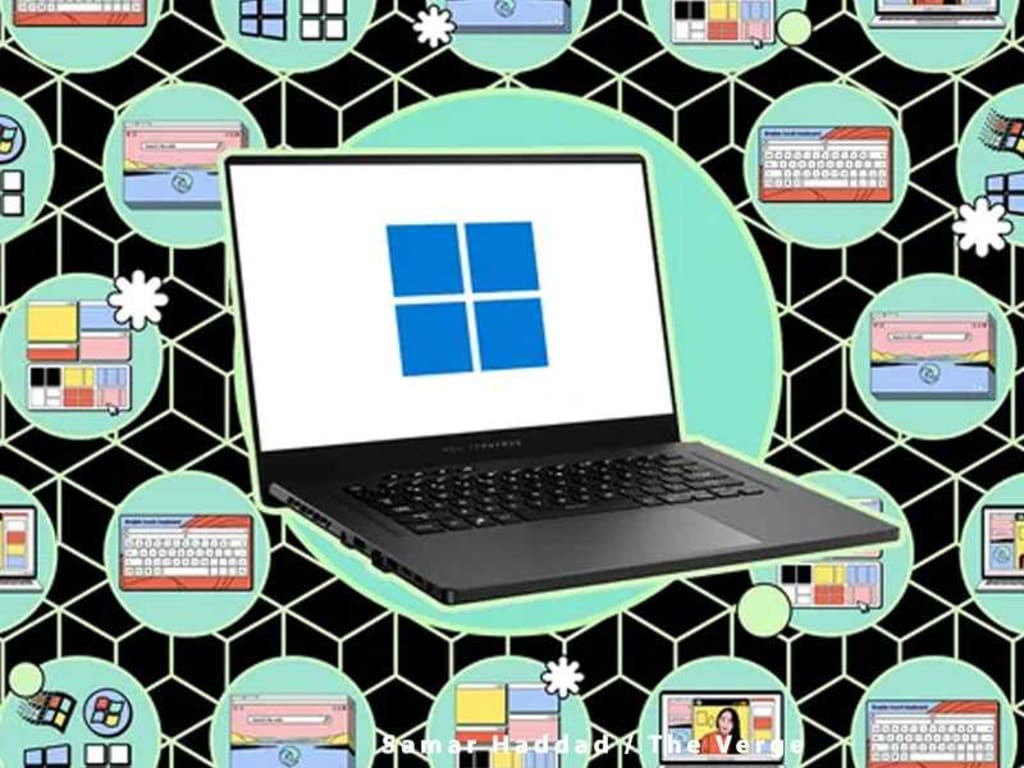How to control what boots up with Windows
control what boots up with Windows

At the point when Windows boots up, it's not only the working framework stacking itself into memory: an assortment of other applications, instruments, and administrations fire up too, designed to fire up with Windows naturally. Furthermore, contingent upon what you've introduced, a large number of them might be firing up without your insight or assent.
Some of the time this can be exceptionally helpful, particularly when you don't need to stress over neglecting to send off something significant. You need to ensure your antivirus programming is continuously running, for instance, and that your media server or reinforcement programming is generally accessible. Then again, as you add an ever increasing number of utilizations to your PC, a great deal of them might be set to consequently fire up with Windows, and that implies it takes more time for Windows to prepare for use, and there are more projects continually running behind the scenes, taking up valuable framework assets.
That is the terrible information. Fortunately Windows gives you a lot of command over which applications fire up with the working framework itself, so you can smooth out the rundown to ensure just the most helpful devices are incorporated.
Really take a look at what's running
As a matter of some importance, it assists with understanding what you're managing: restart Windows, and in the wake of signing in, give your PC a couple of moments for all that to stack up. Then, at that point, you can investigate what's running.
The clearest places you will see which applications have stacked are on the taskbar and in the framework plate (down in the lower right corner, by the clock). Search for the little bolt facing up; assuming you click on that, it will show you all the stacked applications whose symbols didn't fit in that right-hand space.
Really take a look at the framework plate to see which applications fired up with Windows.
For a more nitty gritty gander at what's running on your situation, right-click on a clear region of the taskbar and pick Undertaking Director. On the Cycles tab, you'll see your fundamental applications (every one of those that are right now running) at the top, with foundation processes recorded under. These foundation processes handle occupations, for example, paying special attention to equipment extras or overseeing record matching up and will not be guaranteed to have a UI.
In the event that you scroll further down the rundown, you'll find Windows processes, which deal with the running of the working framework. Processes incorporate things like the Work area Window Supervisor and a bundle named Administration Host (which load the libraries Windows needs to run), among others. More often than not, you must slow down these cycles (with the conceivable exemption of the library, which you may once in a while dig into for explicit fixes).
Accommodatingly, to one side of each program and cycle, the Undertaking Supervisor shows the ongoing requests it is making on the central processor, Slam, circle, and organization association. This can assist you with choosing which applications you need to permit to fire up with Windows and which you'd prefer send off physically — regardless of whether a program is valuable, you could conclude you don't believe it should run naturally in light of the number of framework assets it needs.
Task Supervisor shows you what's at present running.
Relax in the event that you don't perceive all that behind the scenes processes list; they won't all accompany a product program (like Dropbox or Photoshop) connected to their name. A speedy web look for the interaction name ought to be sufficient to let you know it and what its occupation is on your framework. Furthermore, here, you should be somewhat more cautious due to how intently foundation processes are coordinated with Windows. Be certain you understand what an interaction is doing and what it's related with before you stop it.
Change to the Presentation tab on the left to see the requests as of now being placed on your Windows PC and the Application history tab to see central processor time, network use, and warnings for each of your projects over the course of the last month.
Making changes
We're most of the way there — since it has become so obvious what you're managing, you can start to roll out certain improvements. The primary spot to begin is with the actual applications, and the methodology you want to take will shift from application to application.
On some applications, you simply need to right-tap on the program symbol in the framework plate, and you'll track down the choice to have the application fire up or not fire up with Windows.
NordVPN is one of the applications where you have some control over assuming that it dispatches at boot-up by going into its Settings.
With other applications, you'll have to plunge further into the settings to find the choice you really want. For instance, if you need to change how music application Spotify opens when you boot up:
In the Spotify application, click your profile symbol (upper right), then Settings.
Look down to Startup and window conduct and search for Open Spotify consequently after you sign into the PC. Click on the drop-down menu close to it.
Pick Yes (Spotify begins with Windows), No (Spotify doesn't begin with Windows), or Limited (Spotify begins with Windows, yet entirely concealed).
Note that many projects offer this "begin limited" choice — NordVPN is another that we've seen. It's a decent center ground choice if you have any desire to have a program generally accessible (and it's not excessively exhausting on your framework assets), but rather you would rather not see it until you really want it.
Utilizing Undertaking Chief to switch startup
In the event that you can't track down the pertinent choice in the actual program, or on the other hand if you need to change more than each program in turn, make a beeline for the Errand Director once more.
Open the Startup applications sheet.
Right-click on a program you would rather not start with Windows and pick Debilitate.
To reestablish an application, right-click on it and pick Empower.
It just so happens, for however long you're in the Startup applications page, you might need to check the section headed Boot-up influence, which lets you know how much your PC's assets the application utilizes. Assuming your PC dials back or hits any comparable issues, closing down applications that have high effect could help.
You can likewise utilize the Errand Director to forestall applications from naturally beginning with Windows.
This doesn't influence the situation with the program as far as its Beginning menu or work area alternate ways or whatever else; it's as yet accessible to send off as expected. (Obviously, totally uninstalling a program is likewise a possibility for those applications you're not utilizing by any stretch of the imagination, as it'll let loose circle space and decrease framework mess.)
With regards to foundation processes, you ought to find that they close down when their parent application is debilitated. In the event that you're actually seeing puzzling cycles that don't give off an impression of being connected to a program (as such, its name doesn't reference any known applications), you can run a quest for them on the web. You can likewise right-click on them in the Startup applications list and pick Properties to see data, for example, where they're found (which ought to then let you know what application they've been introduced with).





Comments
There are no comments for this story
Be the first to respond and start the conversation.